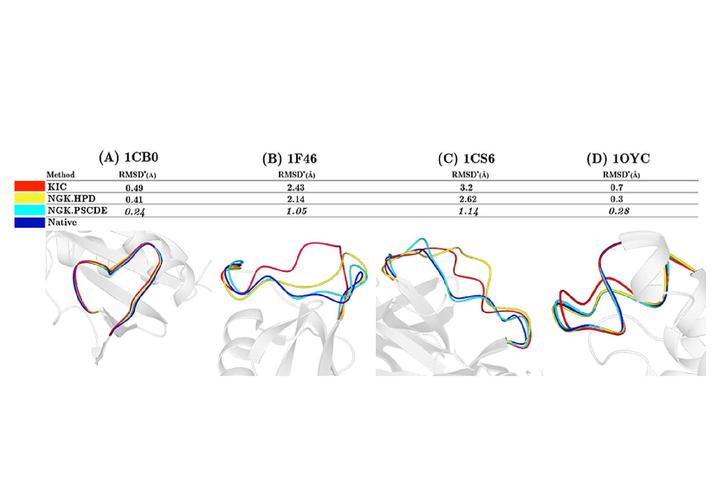Collective Estimation of Multiple Bivariate Density Functions With Application to Angular-Sampling-Based Protein Loop Modeling
 Loop Modeling Prediction
Loop Modeling PredictionAbstract
© 2016 American Statistical Association. This article develops a method for simultaneous estimation of density functions for a collection of populations of protein backbone angle pairs using a data-driven, shared basis that is constructed by bivariate spline functions defined on a triangulation of the bivariate domain. The circular nature of angular data is taken into account by imposing appropriate smoothness constraints across boundaries of the triangles. Maximum penalized likelihood is used to fit the model and an alternating blockwise Newton-type algorithm is developed for computation. A simulation study shows that the collective estimation approach is statistically more efficient than estimating the densities individually. The proposed method was used to estimate neighbor-dependent distributions of protein backbone dihedral angles (i.e., Ramachandran distributions). The estimated distributions were applied to protein loop modeling, one of the most challenging open problems in protein structure prediction, by feeding them into an angular-sampling-based loop structure prediction framework. Our estimated distributions compared favorably to the Ramachandran distributions estimated by fitting a hierarchical Dirichlet process model; and in particular, our distributions showed significant improvements on the hard cases where existing methods do not work well.